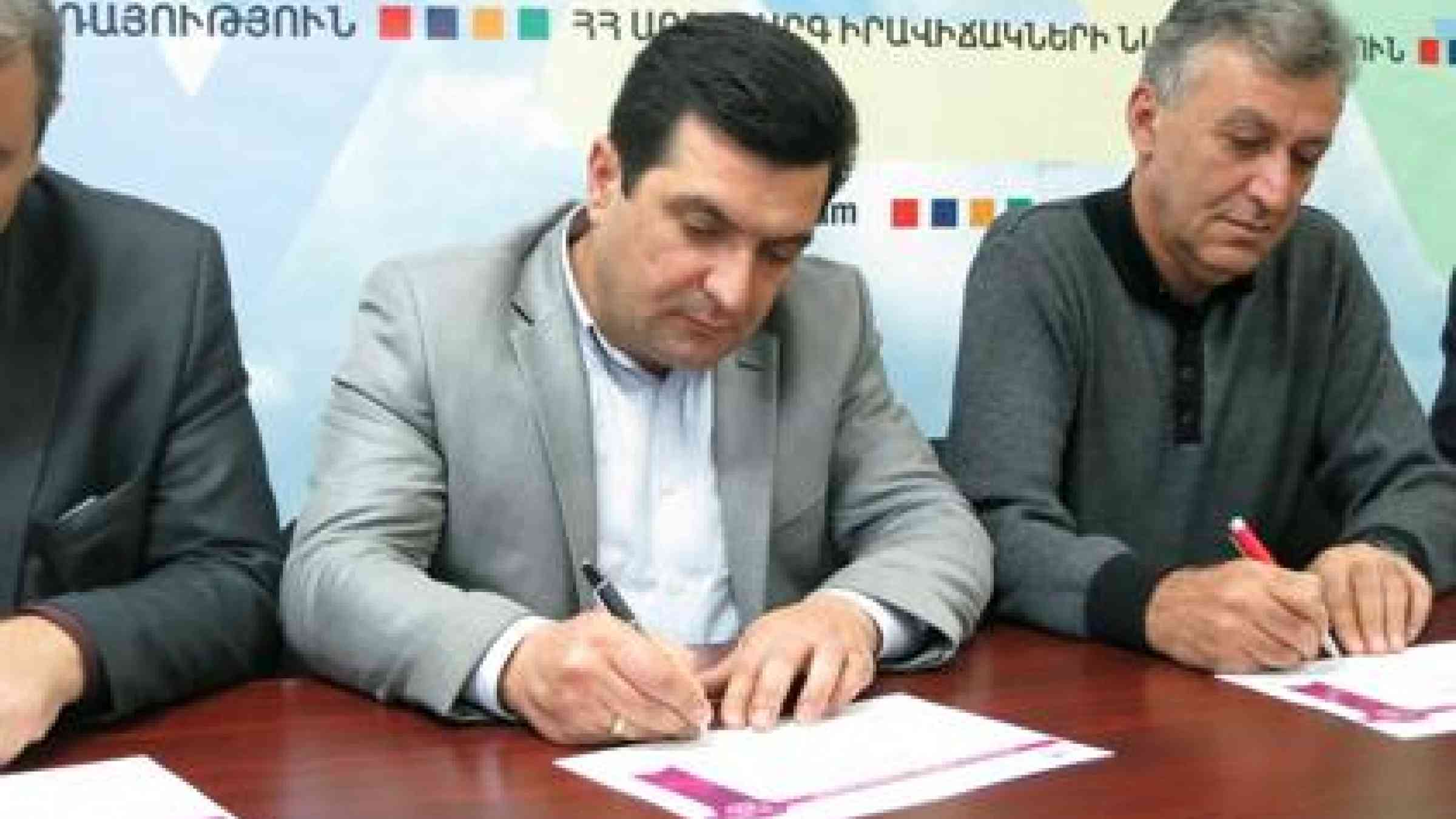
YEREVAN, 1 December 2014 – The Armenian city of Spitak, at the epicentre of the devastating 1988 earthquake, is a reminder of why current efforts to forge an ambitious post-2015 framework for disaster risk reduction are so important.
The city in northern Armenia is an inspiring symbol of what international cooperation can achieve when there is a collective will and capacity – even in the most difficult of times.
Spitak proudly acknowledges that solidarity: several municipal districts bear names such as ‘Estonian’ ‘Italian’ ‘German’, ‘Swiss’, and ‘Uzbek’, in recognition of the support that poured in after the earthquake from many parts of the world.
“It was a very bad and bitter experience, which I and many of the older surviving residents lived through at the time but we came through it and we continue to be determined to build a safer city for our people,” said Deputy Mayor Vardan Sahakyan.
The 7 December 1988 earthquake is estimated to have killed at least 25,000 people, injured 19,000 and left 500,000 people homeless across northern Armenia.
The recovery effort in Spitak has tried to absorb the hard lessons of the tragedy despite many challenges. A safer city has emerged: the new buildings are more robust, the design of the city has been modified and key infrastructure has been relocated.
A week ahead of commemorations to mark the 26th anniversary of the disaster, Deputy Mayor Sahakyan attended a UNISDR Urban Resilience workshop, hosted at the Armenian Academy of Civil Defence, in Yerevan, under the Ministry of Emergency Situations.
The forum, organized by UNISDR’s Global Education Training Institute (GETI), based in Incheon, Republic of Korea, and UNDP Armenia brought together DRR policymakers and practitioners from five Armenian cities: Aparan, Akhtala, Gyumri, Spitak and Vanadzor.
Deputy Mayor Sahakyan was suitably impressed; at the closing of the event he signed up his city of 15,000 people to UNISDR’s Making Cities Resilient campaign “so that we can share our experience with others as well as learn from them”.
“Strengthening the resilience of Spitak is a necessity for us and we also want to reach out to others, as others reached out to us during our time of need,” Deputy Mayor Sahakyan said.
“We really appreciate the partnership approach and the support it brings: look at our city with all those different districts named in honour of countries who supported us; as well as a school built with support from the Czechs; a hospital built with support from the Norwegians … I could go on.”
A majority of the 25,000 killed in the 1988 earthquake were children or adolescents, many of whom were at school at 11.41am, the time the earthquake occurred. In Spitak and Gyumri – two of the worst hit cities – 105 out of 131 schools and kindergartens were destroyed.
The Third UN World Conference on Disaster Risk Reduction in Sendai, Japan, in March 2015, is set to launch a global safe schools initiative and will call on countries and stakeholders to join forces to increase the safety and resilience of schoolchildren and their schools.
The Making Cities Resilient Campaign now has 2,441 member cities, which use the campaign’s Ten Essentials checklist as a guide to reduce the disaster risk of their municipalities. Areas of focus include organization and coordination with citizen participation; risk assessments; infrastructure that reduces risk such as flood drains, safety of schools and health facilities; building regulations and land use; education; ecosystem protection; emergency management and recovery.